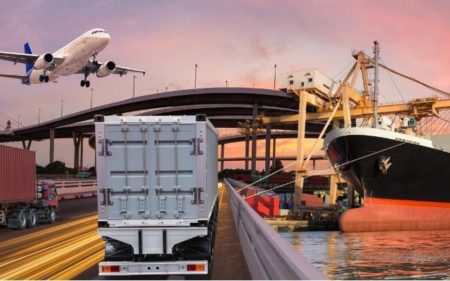Over half of shippers claim that digitization is important to their business strategy, but less than a third reported that they plan to invest in it. In fact, Deloitte has found that many of those investing remain in the early stages of adoption.
Enterprises across industries such as retail, travel and transportation, healthcare, heavy equipment, utilities, logistics, and telecommunications rely on effective fleet management for uninterrupted flow of goods and services.

But, arguably, the shift from retail to e-tail is the biggest change and opportunity the industry has seen since the integration of the global supply chain. The fight to deliver the lion’s share of the ever-growing volume of goods bought online is heating up between logistics companies and online retailers. That last mile is going to make or break logistics companies, and if they don’t invest in their data strategies and analytics now, they cede their territory to digital retailers who are hungry for opportunities integrate and streamline their businesses and to expand their market share.
Now is the time to seize opportunity. As the volume of machine data in supply chain and logistics increases, new opportunities to improve efficiency and customer experiences arise. It is now possible for logistics organizations to interactively derive insight from vast volumes of streaming data for truly real-time analytics on inventory optimization, route optimization, and transport analytics. Logistics professionals gain deeper, faster, actionable insights into operations, customers, and markets, giving them the edge they need.
Here are four ways the logistics industry is able to address the challenges presented by the growing unpredictability of data and the increasing complexity of analysis in the post-big data era of the Extreme Data Economy:
-
Advanced Transportation Analytics
Transportation agencies and authorities generate terabytes of data from an array of sensors and operational systems, but until recently, these data sources were not connected. Today, the challenge is figuring out how to use all this data effectively to inform planning activity, aid in managing transportation networks, improve operations, reduce costs, and better serve travelers. New tools are needed, such as scalable databases that can leverage compute dense devices such as the NVIDIA (NVDA) GPU for geospatial analysis, to allow transportation professionals to act on real-time transportation data in order to:
- Optimize freight movement and routing
- Optimize inventory management and capacity
- Optimize fleet operations
- Improve customer experience
- Increase safety
- Reduce environmental impact
- Optimize transit schedules by predicting the impact of maintenance, congestion, and accidents
-
Route Planning and Optimization
Fleet managers can integrate data from vehicles, scanners, sensors, personnel, and live weather and traffic reports, to more effectively manage and deploy assets. And by using machine learning and advanced analytics, they can discover and act on insights to optimize delivery routes in real time.
These insights power data analytics-driven fleet and personnel scheduling, route planning, rerouting, and supply chain optimization, which saves time, reduces fuel and overtime costs, and improves the customer experience.
One of the world’s largest logistics organizations optimizes the operations of its several hundred thousand vehicles and employees, using visualizations and analytics of real-time data to more efficiently deliver goods. The GPU-based insight engine they use merges the query needs of the traditional relational database developer with the scalability demands of the modern, IoT-centric enterprise.
-
Just-In-Time Inventory Optimization
Enterprises need real-time insights into logistics and transportation systems to view and track deliveries for stores. And they need inventory systems that can react swiftly to a variety of data feeds to make up-to-the-minute routing and inventory decisions. Customer sentiment data can also inform inventory management supply chain decisions. With an insight engine powered by GPUs, enterprises can better manage workforce, supply chain, inventory, overstocks and spoilage, and avoid stock outs.
Retailers have discovered that the more they can make data fast, actionable, and intelligent, the more likely they’ll be to build a long-term relationship with a customer. Retail and CPG organizations are shortening data processing time, visualizing more data, and uncovering patterns to reveal new knowledge and insights in sub-seconds.
Retailers can get tracking visibility and notifications of store deliveries, to provide store managers and distribution centers with just-in-time insights, even for thousands of trucks delivering millions of shipments every month.
One such retailer deployed Kinetica, a GPU database engine, to fuse their transaction data with their inventory text descriptions. With just two queries, the retailer could see where their highest organic food product sales were occurring throughout the nation. The retailer could then create targeted and customized fulfillment strategies by store.
-
Condition-Based Equipment Maintenance
By simultaneously ingesting, analyzing, and visualizing real-time sensor data from aircraft, cars, trucks, and ships, and combining that with more static data such as maintenance schedules, logistics organizations can gain contextual insight into the condition of their vehicles and assets. Performing predictive analytics on this data in real time helps organizations to detect patterns, anomalies, deteriorating performance, and future failures. They can proactively maintain equipment, improve fleet productivity, and avoid costly downtime.
Enterprises across industries such as retail, travel and transportation, healthcare, heavy equipment, utilities, logistics, and telecommunications rely on effective fleet management for uninterrupted flow of goods and services. Leading enterprises use real-time fleet analytics to simultaneously ingest, enrich, explore, analyze, visualize, and act on data within milliseconds to make critical decisions, as well as find efficiencies, reduce risk, improve productivity, lower cost, generate new revenue, and improve customer experience. And they’ll need to if they’re going to outcompete slower industry players and new upstarts, from logistics and supply chain players down to digitally savvy e-tailers.
This article was originally published on Forbes on 5/25.
Nima Negahban is co-founder and CTO of Kinetica.

